
Difficulty seeing at night or while driving
“Night driving is the best benchmark of when your vision is starting to drop off,” says Michelle Andreoli, MD, clinical spokesperson for the American Academy of Ophthalmology (AAO). That’s because everyone has a harder time seeing something in the dark or in the far distance—so if your eyes are already struggling, it’ll become even more noticeable in these situations. The solution could be as simple as a new glasses prescription, or it could be a sign of something more problematic, like a cataract that’s beginning to form. An ophthalmologist will be able to assess your night vision and determine the best plan of action.
Learn to spot the signs of eye cataracts.

Red or pink eyes
“Red or pink in the eye can be very complicated and very dangerous,” warns Dr. Andreoli. It’s associated with a variety of conditions, including conjunctivitis (an inflammation of the conjunctiva, a thin layer of transparent tissue that covers the whites of your eyes and inner eyelids), allergies, or even an uncommon type of glaucoma. (Most often glaucoma, a condition often caused by a buildup of pressure inside the eye, has no symptoms at all.) It’s fine to see your primary care doctor first, but if you still have red or pink eyes after 24 to 48 hours, it’s worth giving an ophthalmologist a call. “Something may be more complex than a primary care doctor is able to detect,” says Dr. Andreoli.
Read the terrifying true story of what doctors found in an Ontario woman’s eye.
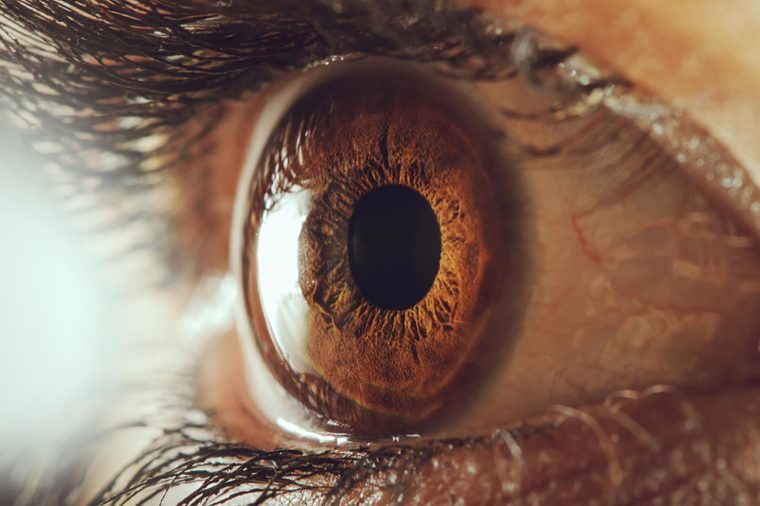
Sensitivity to light
This usually accompanies some kind of inflammation in the eye, according to Dr. Andreoli. The problem could be with your cornea, the thin transparent layer that covers your iris and pupil, or it might go deeper into the eye. Whatever it is, it should be addressed quickly, as some conditions that can cause sensitivity to light may lead to scarring, which in some cases can be permanent. However, light sensitivity can also be caused by conditions completely unrelated to the eye, like allergies, a viral illness, or migraines.
Here’s what those numbers on your glasses mean (and why you should check them).

Blurry vision or trouble focusing on objects
There are a variety of explanations for why you might have these sudden vision changes, so it’s important that your eye doctor does a complete exam to determine what the problem is. They might prescribe eye drops, pills, or even surgery to fix the problem. A good rule of thumb: “If a patient is noticing a change in the quality of their vision, it is a good time to make an appointment to see their ophthalmologist,” says Dr. Andreoli.
Here are seven signs you need new glasses (that have nothing to do with blurry vision).
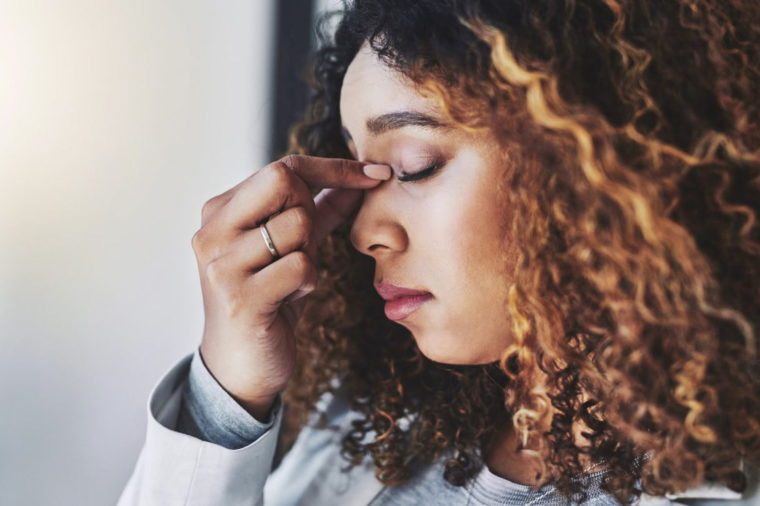
Eye pain
If your eyes hurt, don’t wait around to see if they get better. “Eye pain is never normal,” says Dr. Andreoli. Acute angle-closure glaucoma, for example, causes severe pain—and worse, it can make you go blind in a matter of days. This is an uncommon type of glaucoma that’s considered a medical emergency and also has symptoms like blurry vision, headache, nausea, and vomiting. More common causes of eye pain can be an infection, irritation due to a foreign object, a scratched cornea, dry eyes, allergies, headaches, or inflammation for a variety of reasons. So even if your eye is just slightly bothering you, it’s worth at least calling an ophthalmologist to see what they think.

Diagnosis of a condition that affects the eyes
There are a number of chronic conditions (think: diabetes, lupus, rheumatoid arthritis, multiple sclerosis, and inflammatory bowel disease, just to name a few) that can affect your eyes. Each condition manifests differently; Diabetes, for example, can cause blurry vision, while those with lupus are more likely to notice pain or light sensitivity, according to Dr. Andreoli. To avoid any vision problems after a diagnosis of one of these conditions, check in with an eye doctor to see what they recommend.
Find out how to prevent diabetes.

Frequent headaches
There are a number of things that can cause headaches, but eye health can certainly contribute. Maybe you have eye strain or need a new glasses prescription—or maybe it’s something more serious, like eye alignment. “If someone has been getting some headaches, an ophthalmologist is absolutely a great first step in trying to figure out what’s causing it,” says Dr. Andreoli.
Here’s expert advice on how to improve your eyesight naturally.
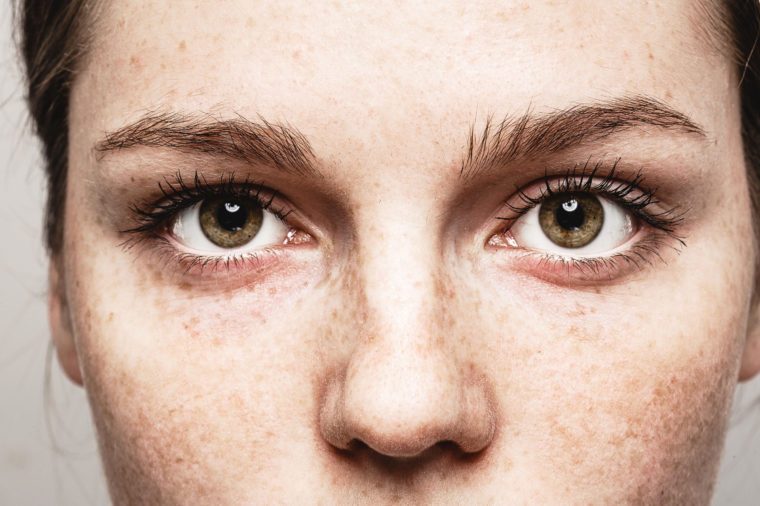
Seeing spots or flashes
These spots (or what doctors call “floaters”) can be normal—but sometimes they’re cause for concern. The main worry? Your retina could be torn, bleeding or detached, which would cause you to see little blobs or flashing lights floating in your vision. If that’s the case, Dr. Andreoli recommends calling your eye doctor immediately. “Those conditions are easy to fix if you can get on them right away,” she says, “but the longer that they’re there, the much more complicated treating them becomes.” A detached retina is considered a medical emergency because of the risk of permanent vision loss. The sudden onset of flashes of light, many new grey or black spots in your vision, or a dark shadow in your field of vision should cause you to seek medical care at the eye doctor or emergency room, according to the National Eye Institute.
Make sure to follow these eye care tips from Canadian optometrists.
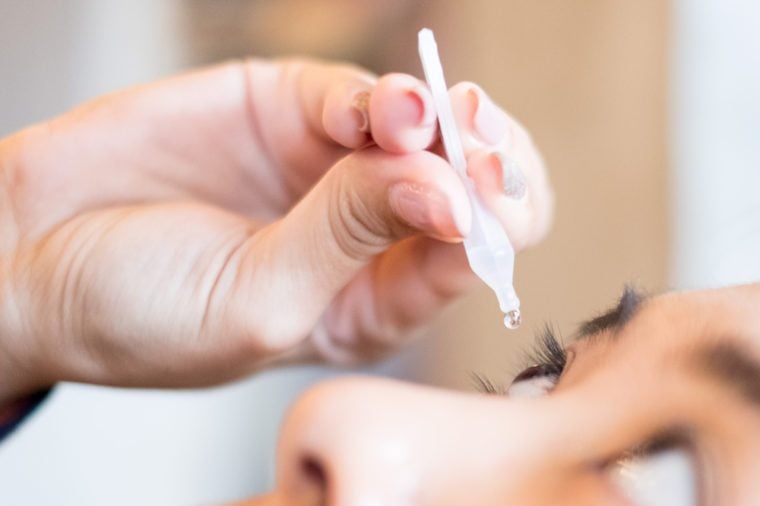
Dry eyes
If your eyes feel sore or like they’re full of little rocks, you could be experiencing dry eye syndrome. It’s a common condition, depending on where you live and who you are—women, for example, are more likely to get dry eye than men, and contact lenses, dry climates, and certain medications can cause it too. For relief, Dr. Andreoli recommends lubricating eye drops from the pharmacy. Also known as artificial tears, the AAO notes that choosing ones without preservatives may reduce the risk of eye irritation. If that doesn’t make you feel better within 24 to 48 hours, follow up with your ophthalmologist. They can evaluate the best treatment for your situation.
Here are 20 symptoms you should never ignore.
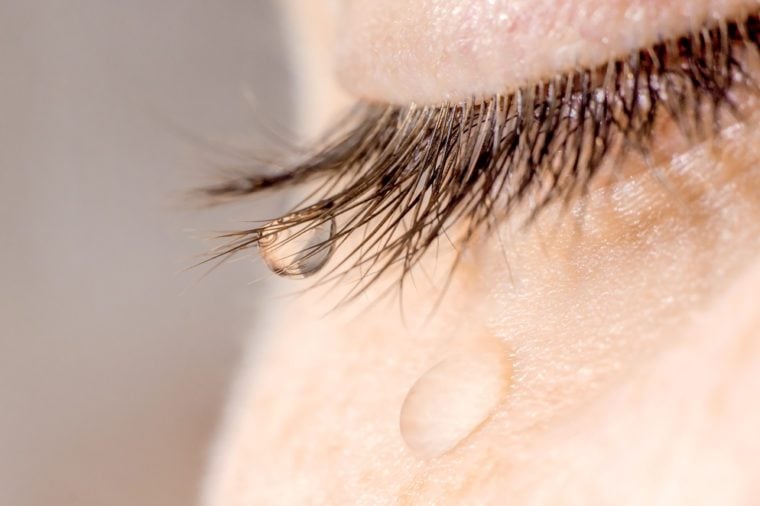
Tons of tears
Strange but true: If your eyes won’t stop watering, it could be a sign that you’ve got dry eye. “A normal, healthy tear film requires lots of different biochemical properties to be in perfect harmony,” says Dr. Andreoli. “And if they’re not, you can either get dryness or watering of the eyes. You might have dry eye syndrome and still have tears pouring down your face.” (Think of it like putting a hand with dry skin into water—it’ll come out wet, but it won’t be lubricated.) Although it sounds counterproductive, you should try the over-the-counter lubricating eye drops for about 24 to 48 hours. And if that doesn’t work, give your ophthalmologist a call.
This teen’s vision loss was a mystery—until a doctor asked him what he ate.

Double vision
This condition can make ophthalmologists nervous, says Dr. Andreoli. “There are some causes of double vision that are quite dangerous,” she adds. Sometimes patients end up being sent to the emergency room, as it could be a sign of a stroke or a problem with blood vessels of the brain. Even if the cause is something less dangerous, seeing two of everything is never normal, so you should seek help right away.
Here’s what it could mean if your eye is twitching.

Eye discomfort when staring at a computer
Humans normally blink about 15 times a minute—but when we stare at a screen, we blink much less often. That’s a problem, as blinking keeps our eyes lubricated. If your eyes are feeling tired and dry after a day at the office, sit further away from the screen and take regular breaks from your device. Lubricating eye drops may help too. But the problem could also be something more complex, such as your glasses prescription or the alignment of your eyes, says Dr. Andreoli. If you don’t start feeling better within a couple days, it’s time for an ophthalmologist to step in.
Next, learn how to maintain healthy eyes at every age.